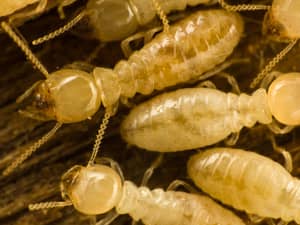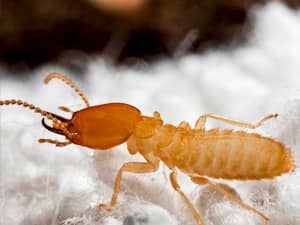Courtesy of Nozzle Nolen

It may not be swarming season, but that doesn’t mean the termite damage stops. Your home is one of your largest investments, and termites can cause extensive damage and depreciate the value that your home has. Every year termites alone cause several billion dollars in structural damage in the United States.

South Florida is home to two very destructive termites: subterranean and drywood. In areas like Boca Raton and Delray Beach, the climate is perfect year-round for these termites; they can infest your home even if they aren’t swarming. Subterranean termites come from underground, building tunnels throughout the soil looking for food. They will leave behind pheromones allowing other termites to travel through those tunnels to the food source. Drywood termites, unlike subterranean termites, will live inside their food source. For both species, there can be multiple colonies found throughout one structure.

The subterranean termites are the most destructive termite and live in very large nests. They need the soil to live, so they will typically build and travel through their tunnels to find their food sources throughout walls and places like the attic. They will eat anything that is wood, cardboard, paper and even plaster. They will eat through your walls and can leave you with nothing. Drywood termites don’t need soil like the subterranean, so they will live inside structures on which they’re feeding. They can be found in wood framing, wood flooring, window sills and even the wood furniture inside your home. They also tend to eat slower than the subterranean termites, but can still eat you out of house and home.
The main sightings of subterranean termites are their carton nests. Signs of damage to walls and blistering of wall paint are also indications of an infestation. You may also sight some of the mud tunnels; however, they may be more difficult to see. A sign of a drywood termite infestation could be identified as spot blistering or warping of the wood. Also, the fecal pellets that drywood termites leave behind are found in mounds, usually looking like a mound of sawdust.

It is important as a homeowner that you expect your home will attract termites at some point in time. Home insurance does not cover termite damage, so it’s vital that your home is treated sooner than later. Nozzle Nolen offers a termite control program that includes an extensive inspection, consultation and treatment. It is recommended that your home is inspected by professionals, like Nozzle Nolen, to identify the right termite. This is significant because the treatments can vary depending upon what type of infestation you may have. No matter the situation, Nozzle Nolen offers a variety of eco-friendly and pet-friendly treatment solutions for you.
If you already have a termite warranty with Nozzle Nolen, you can call today to schedule a time for your specialist to come out to your home. If you don’t already have a termite warranty, we are prepared to protect your home as well, starting with a free inspection!
For more information about Nozzle Nolen, please visit www.nozzlenolen.com.
